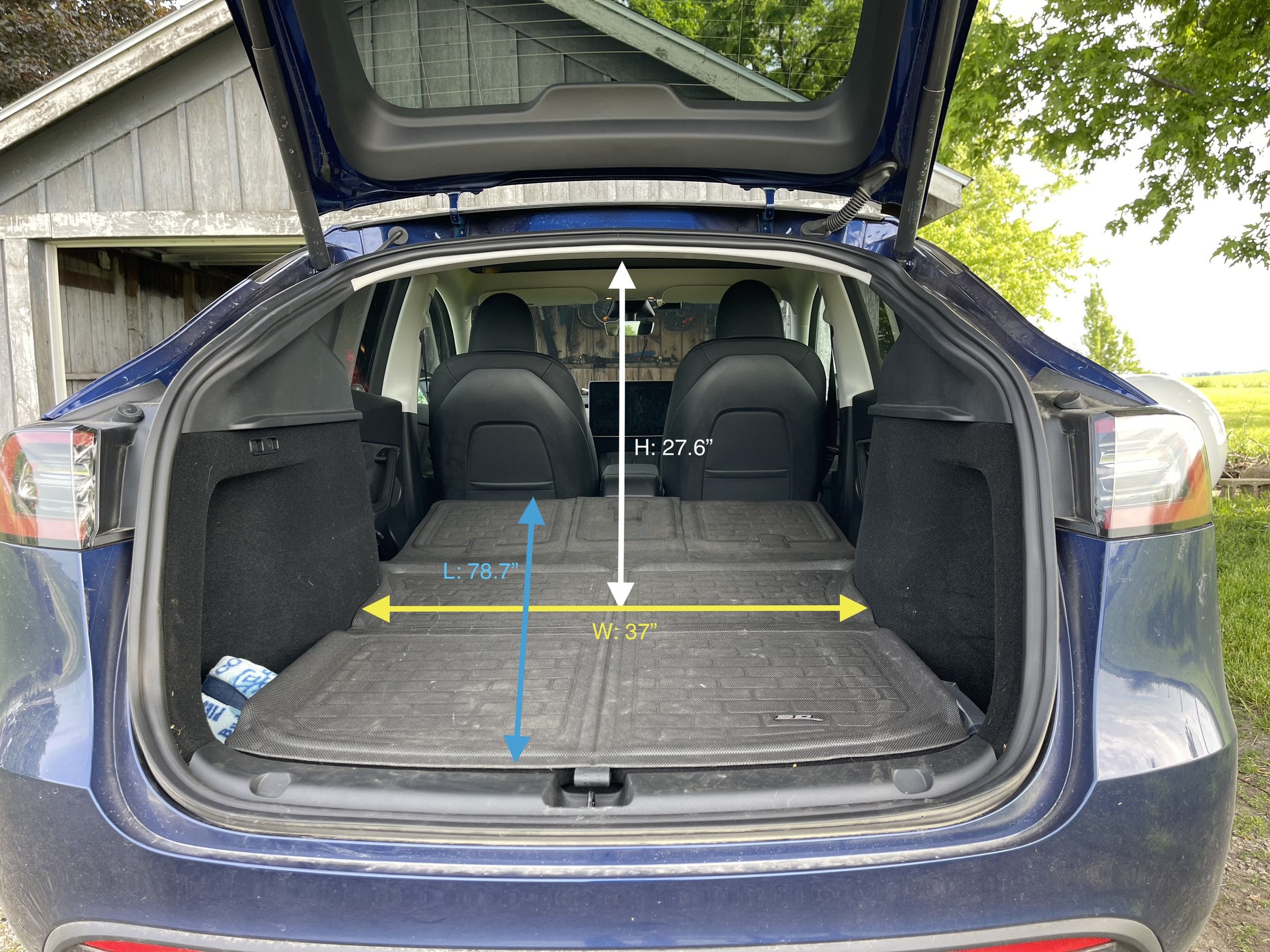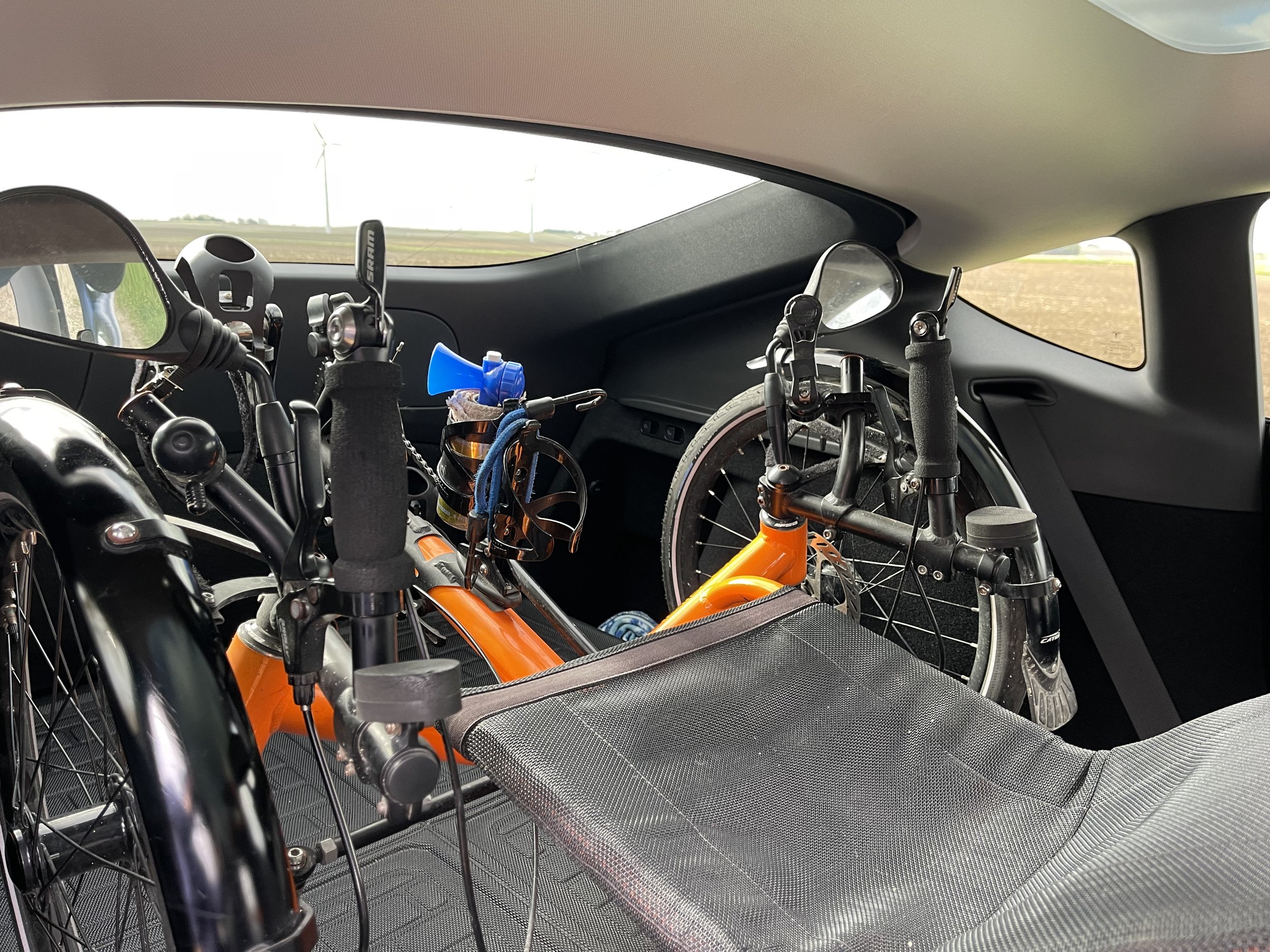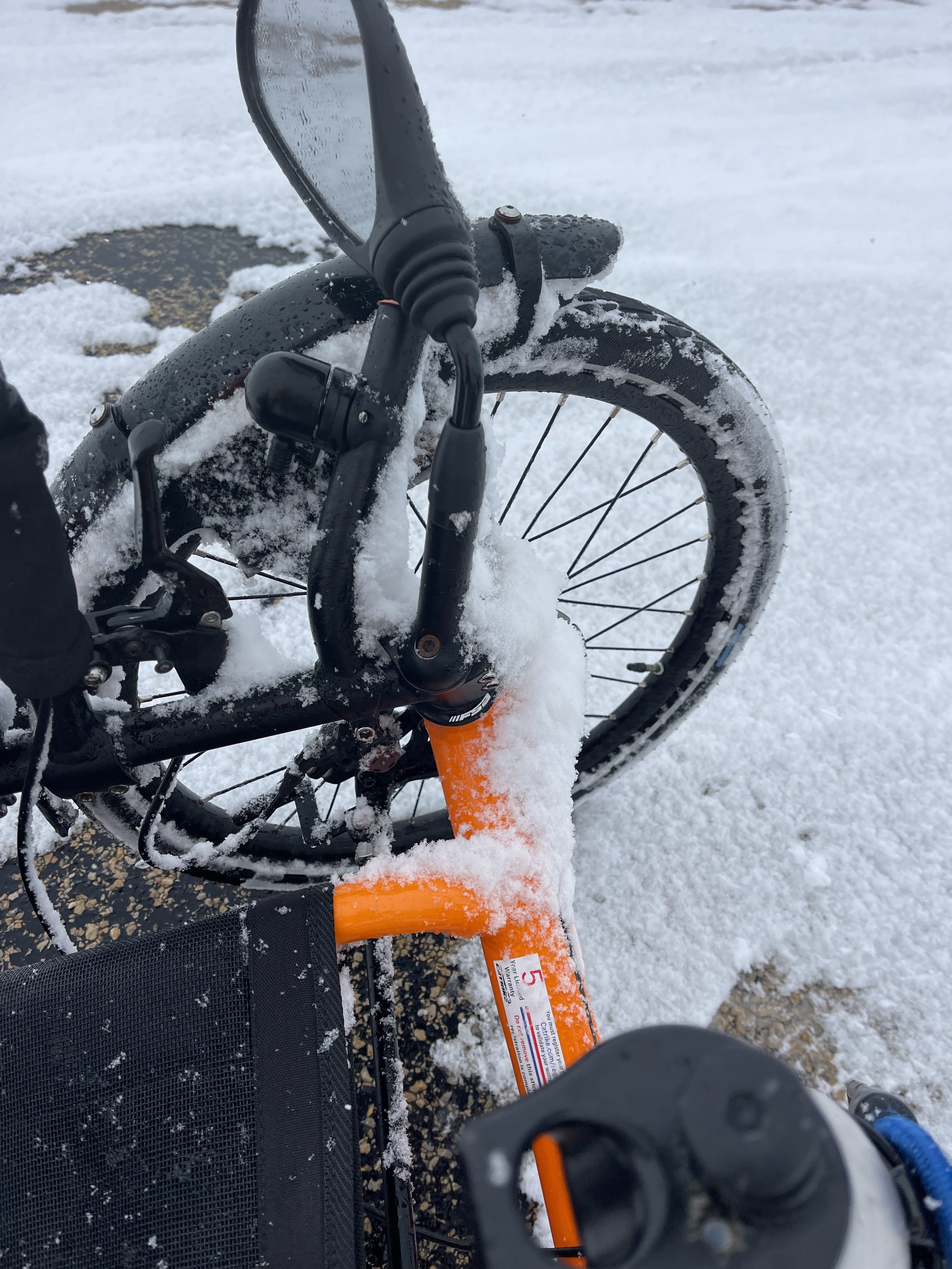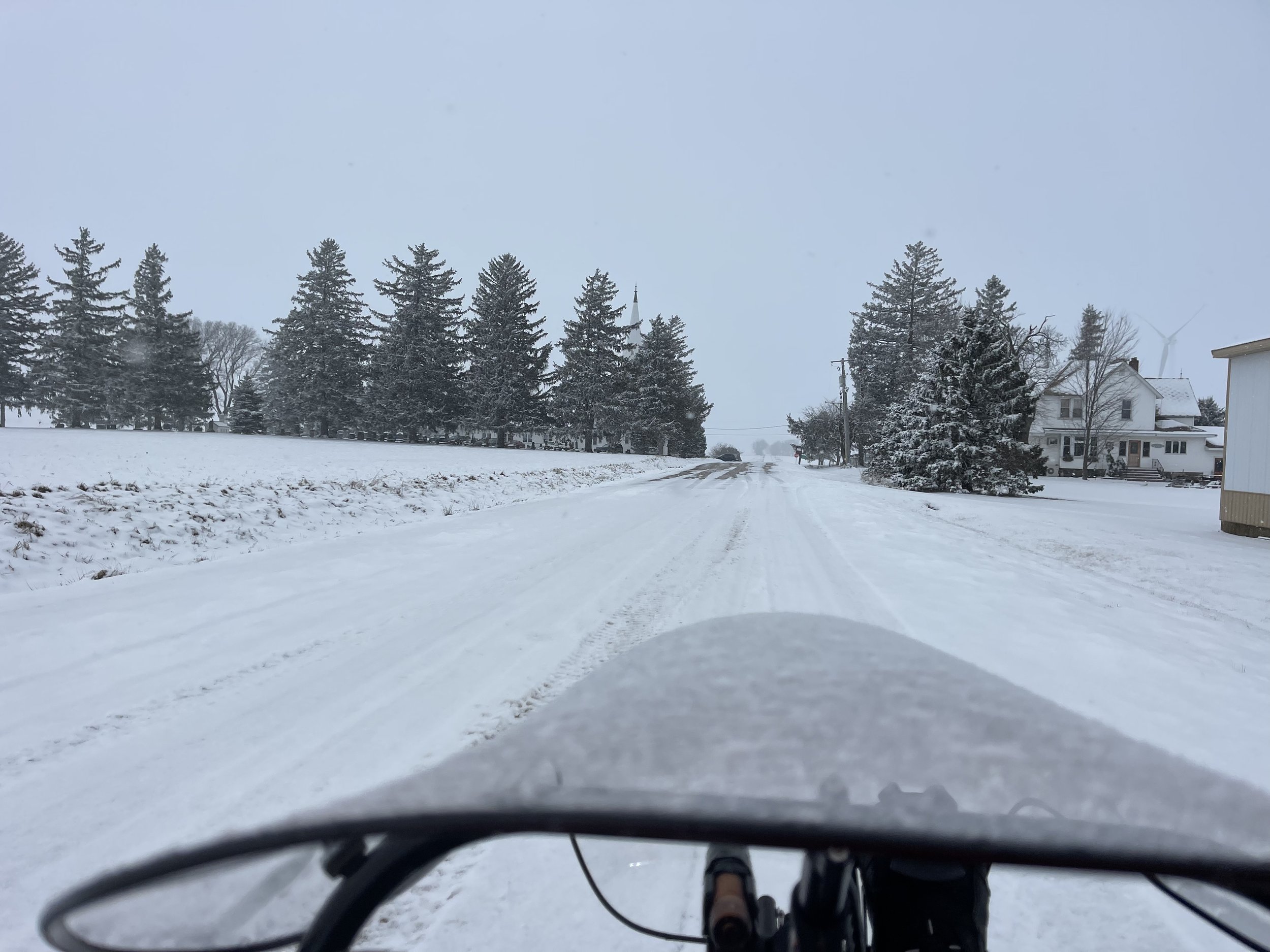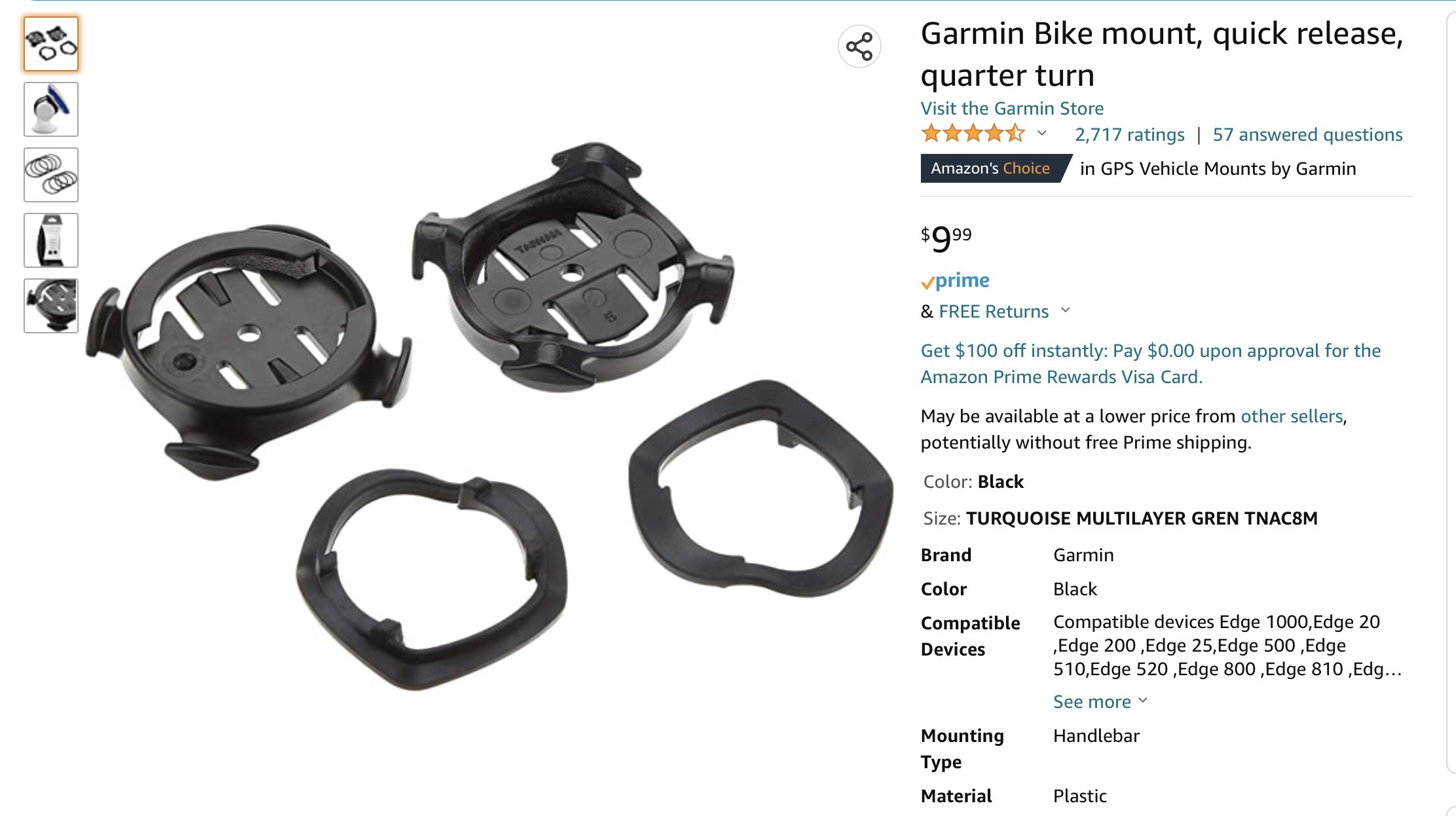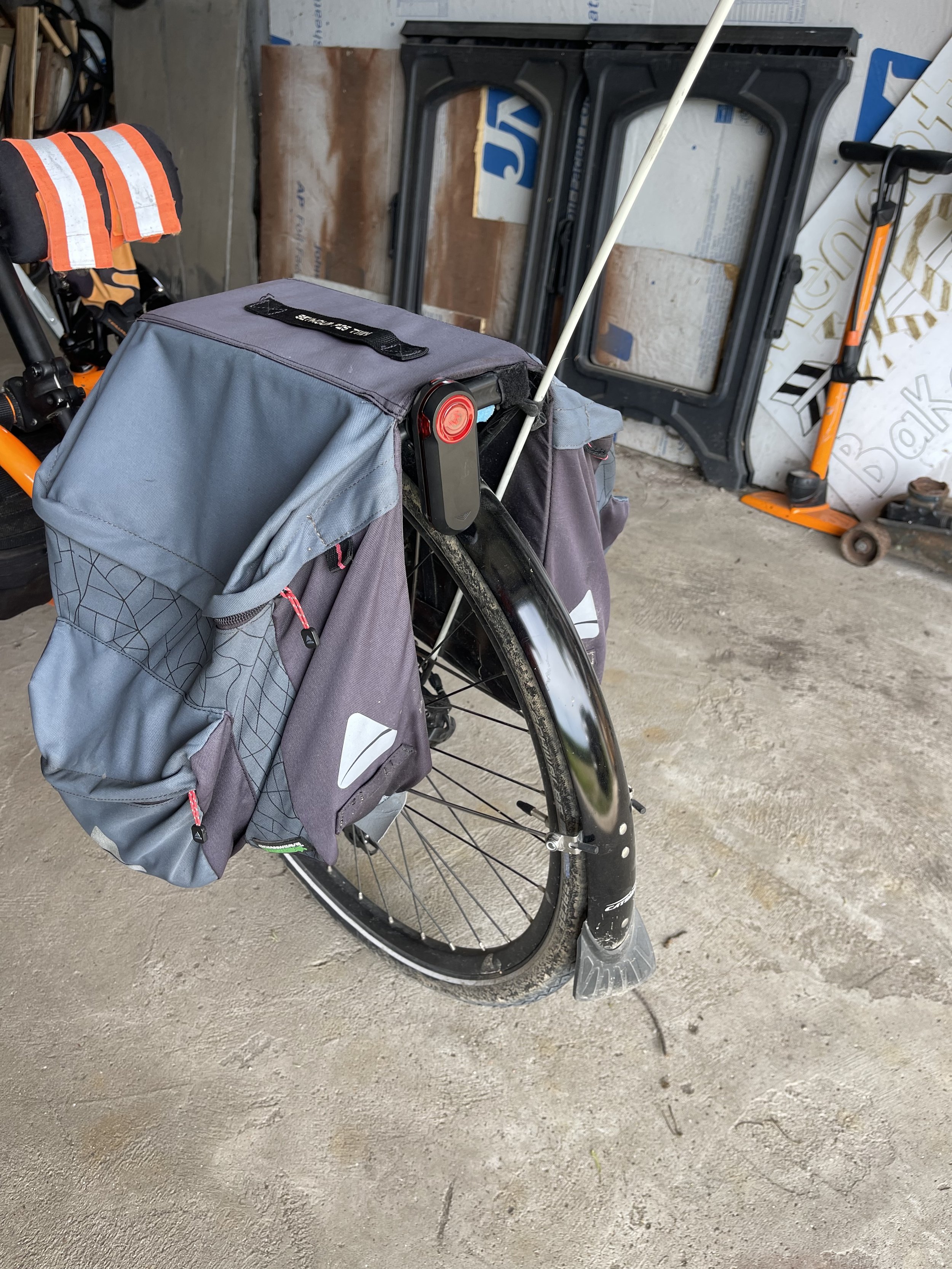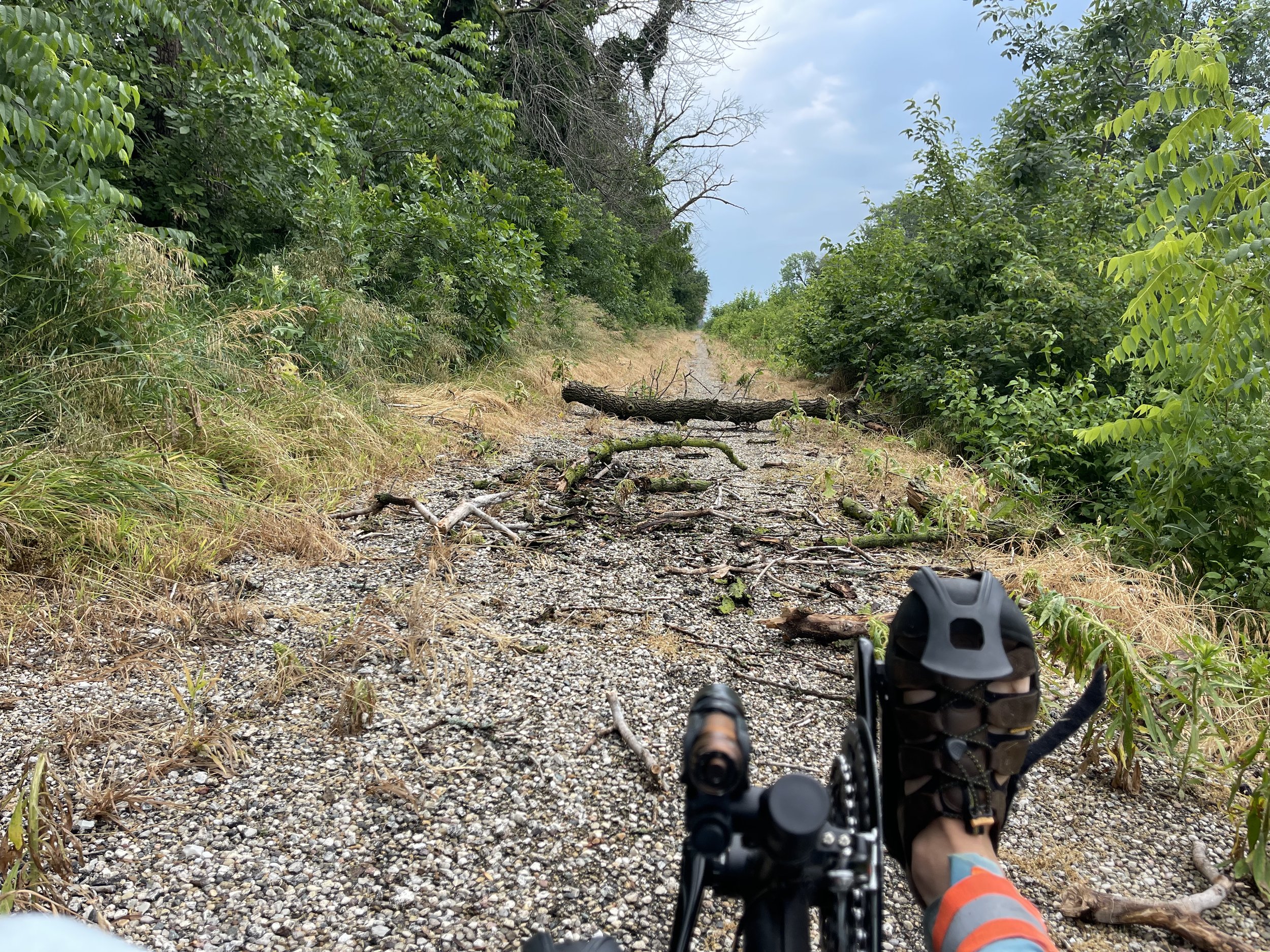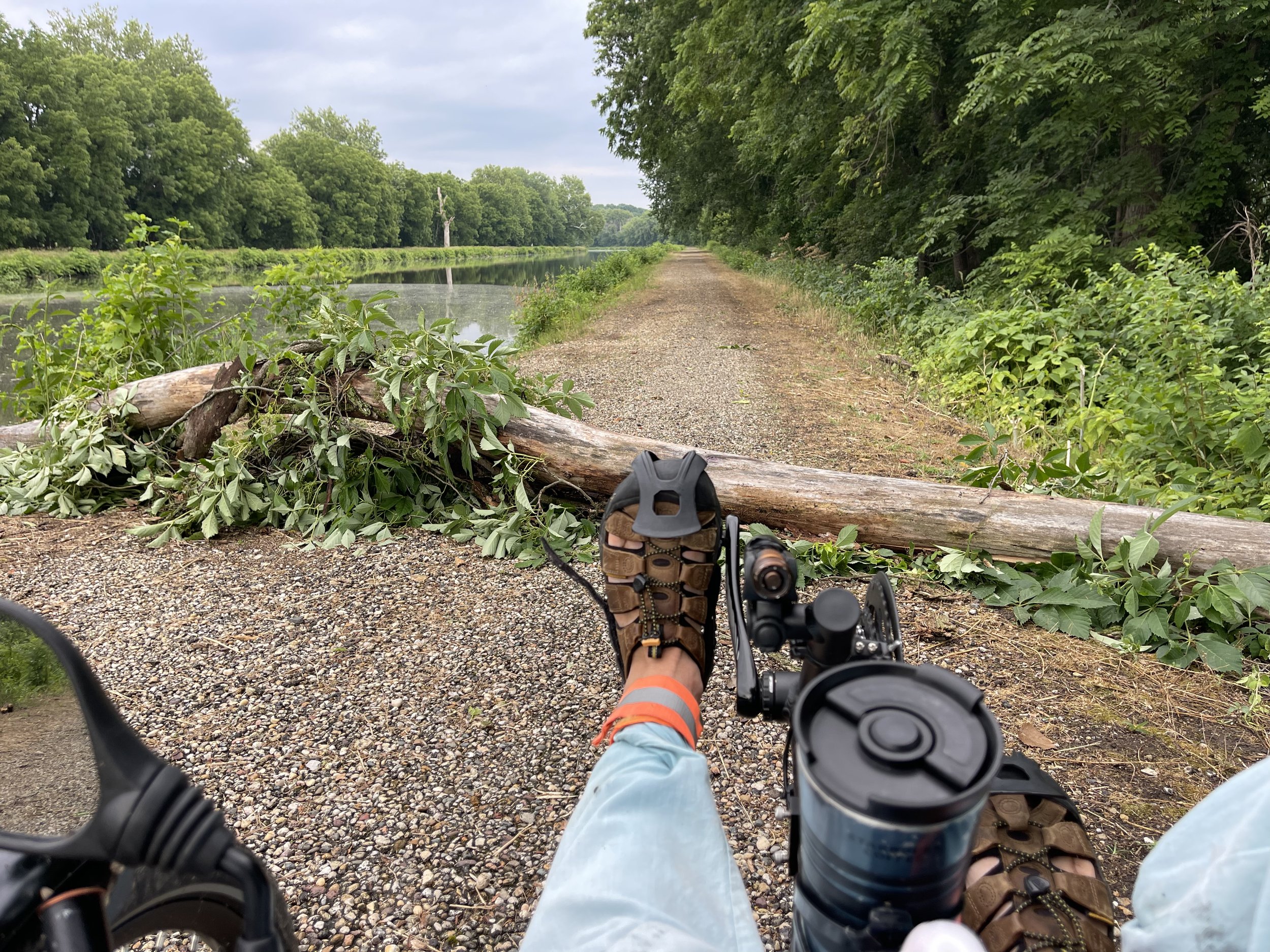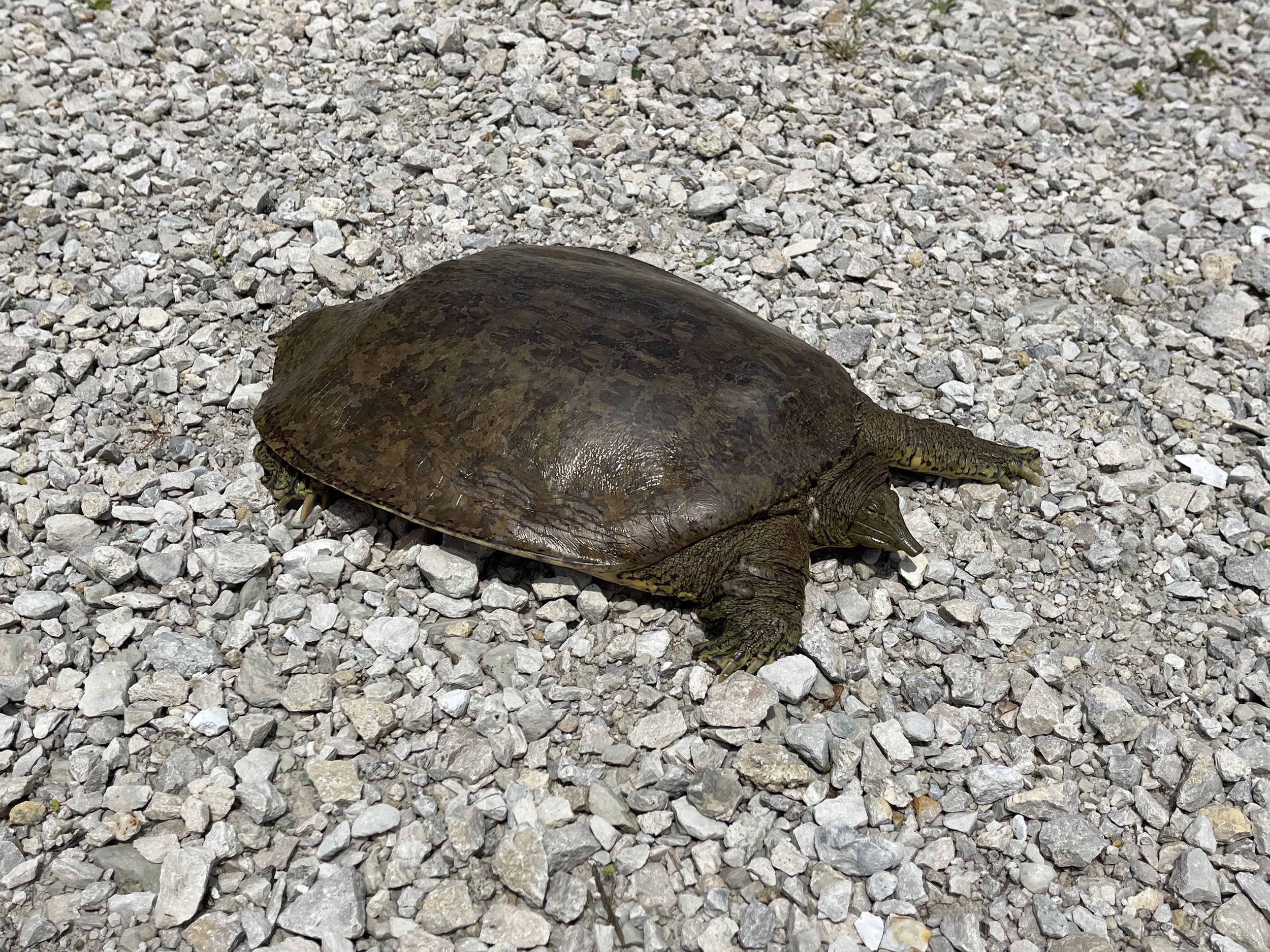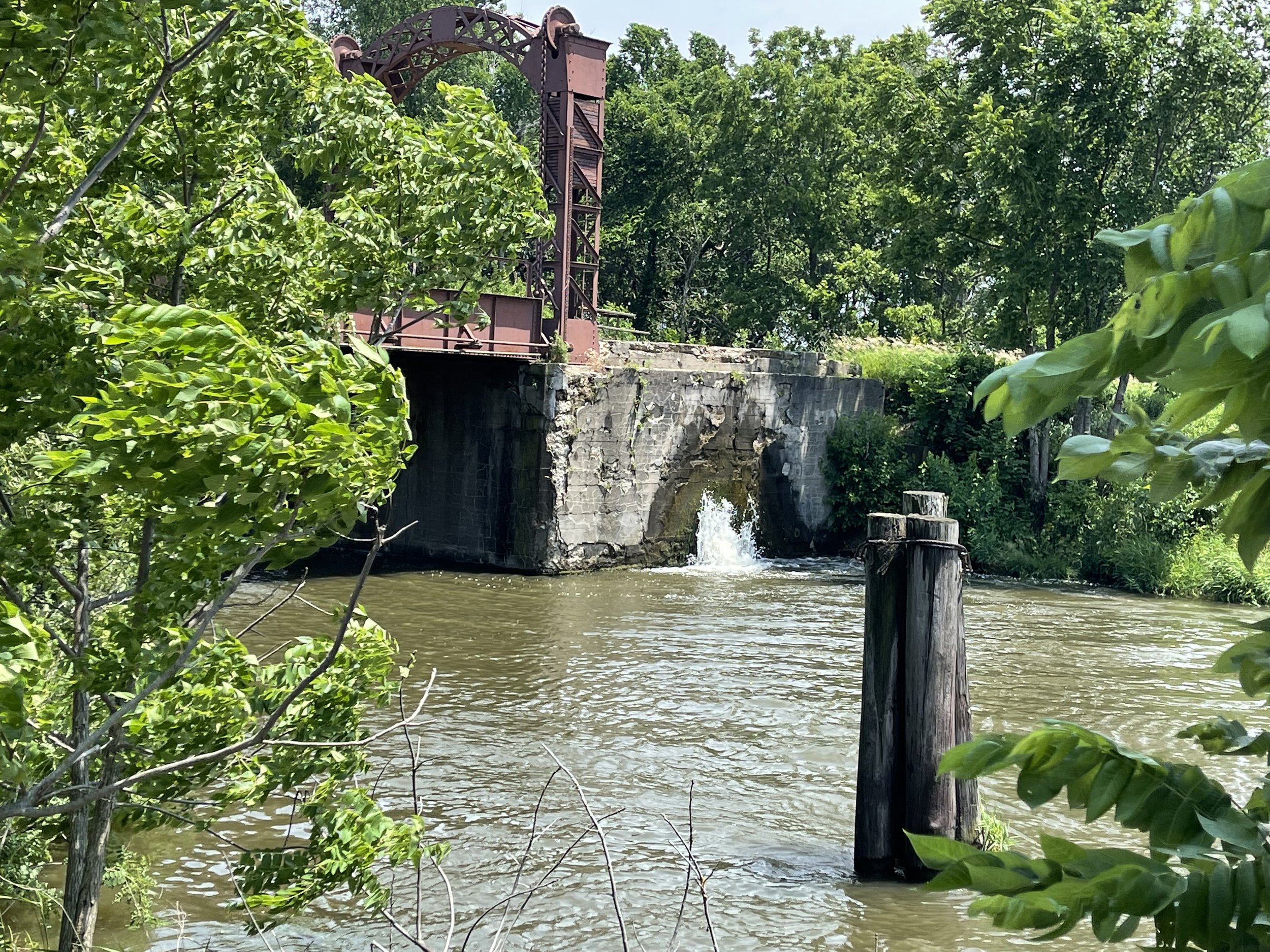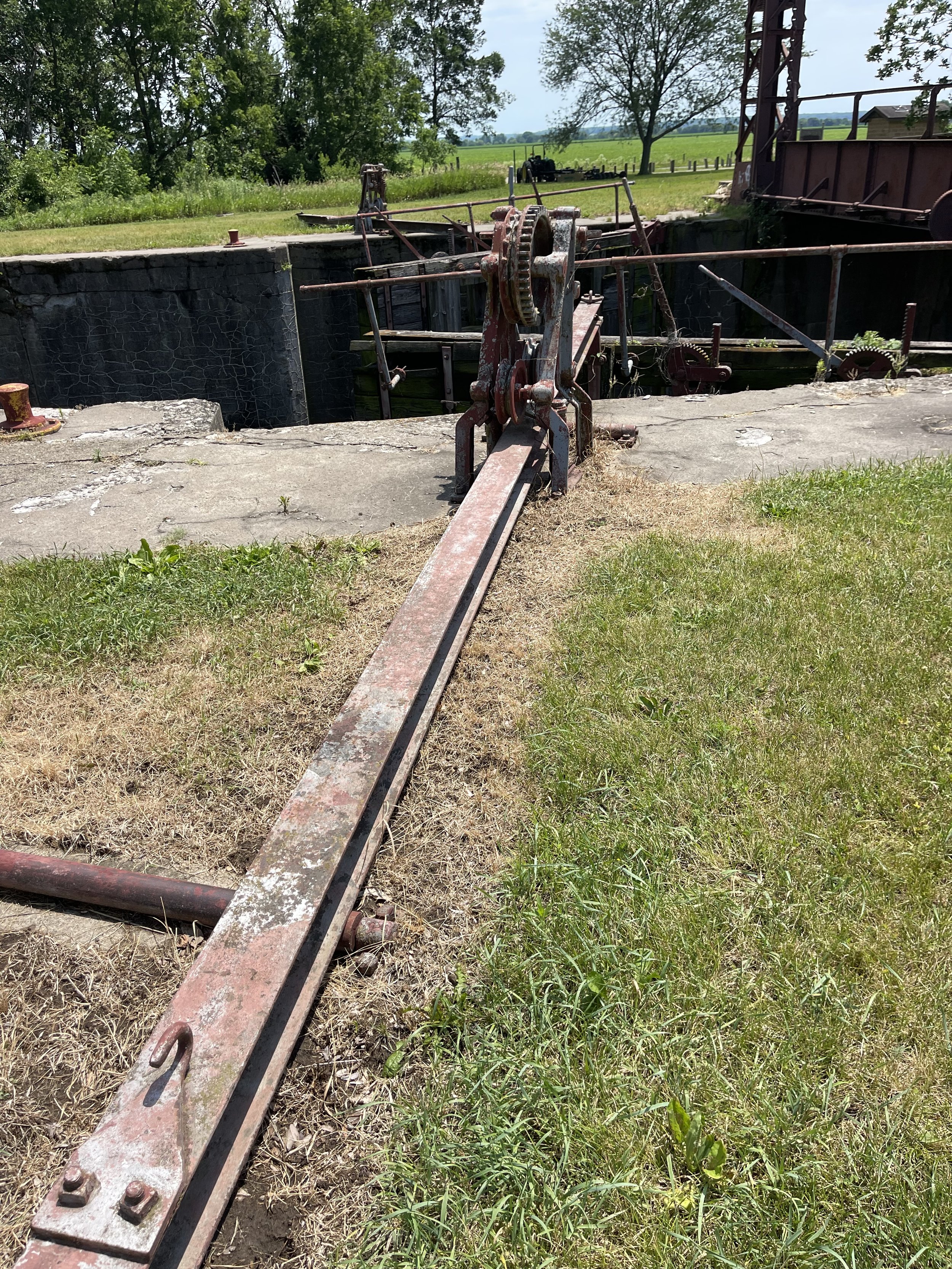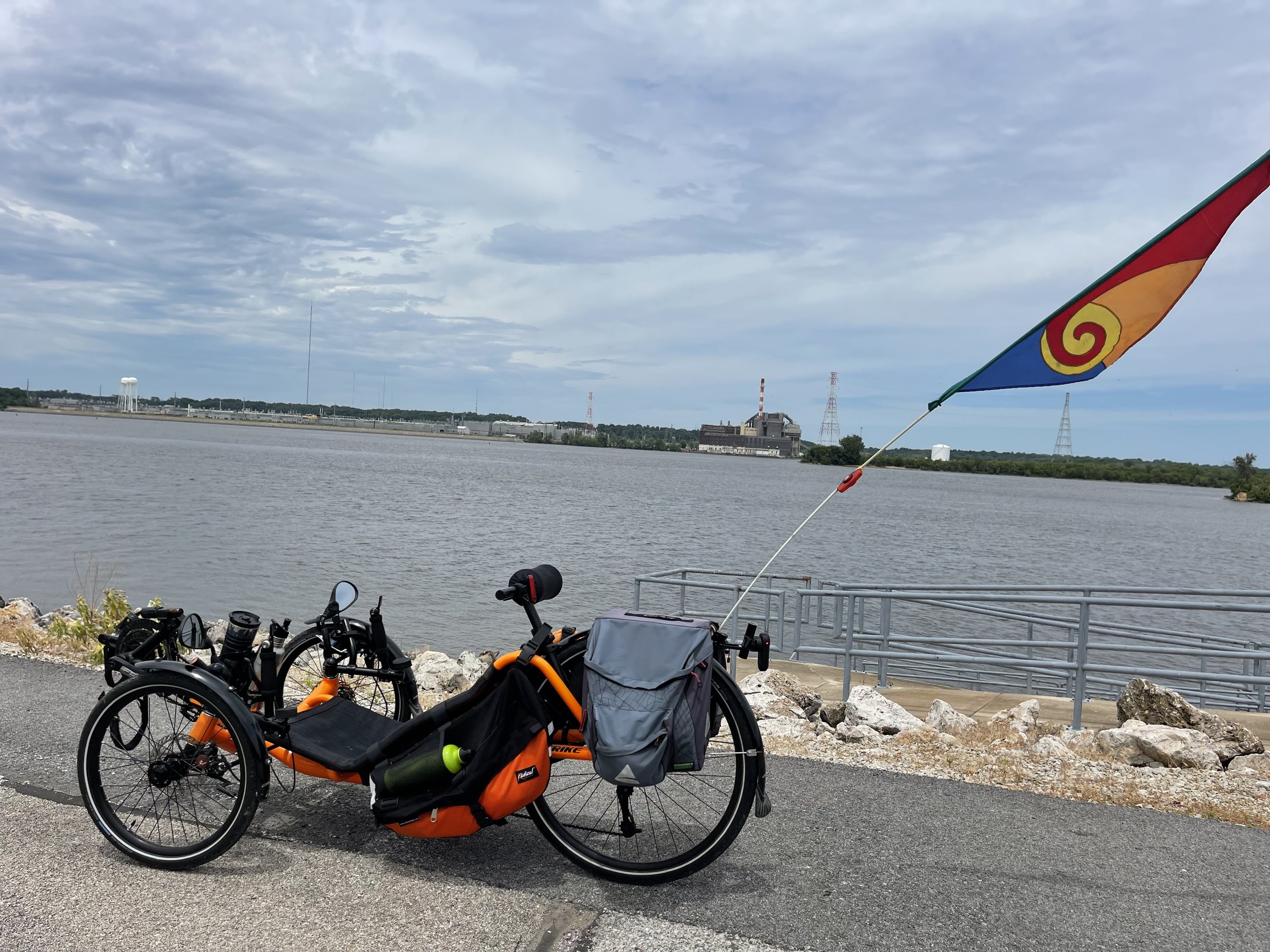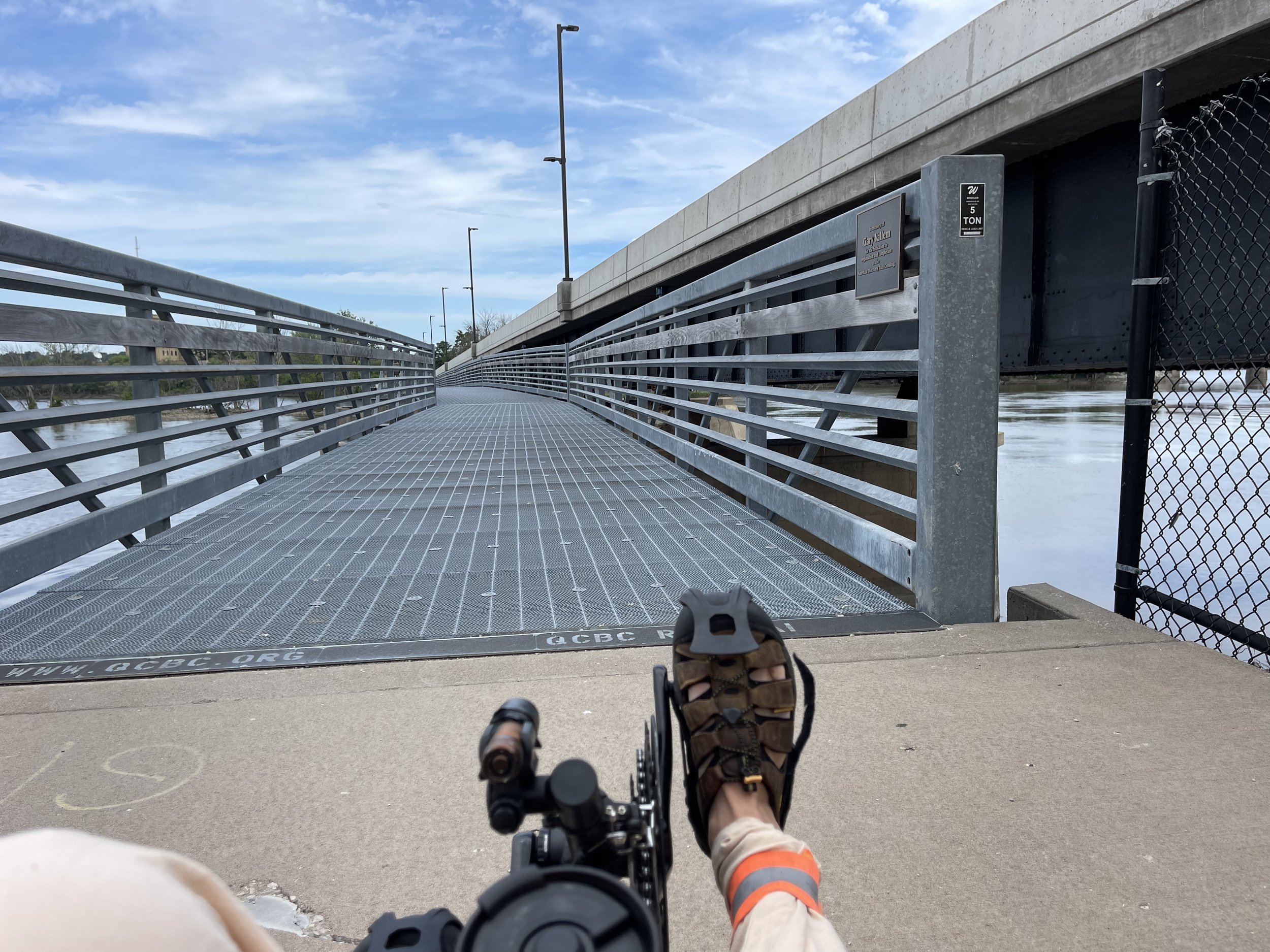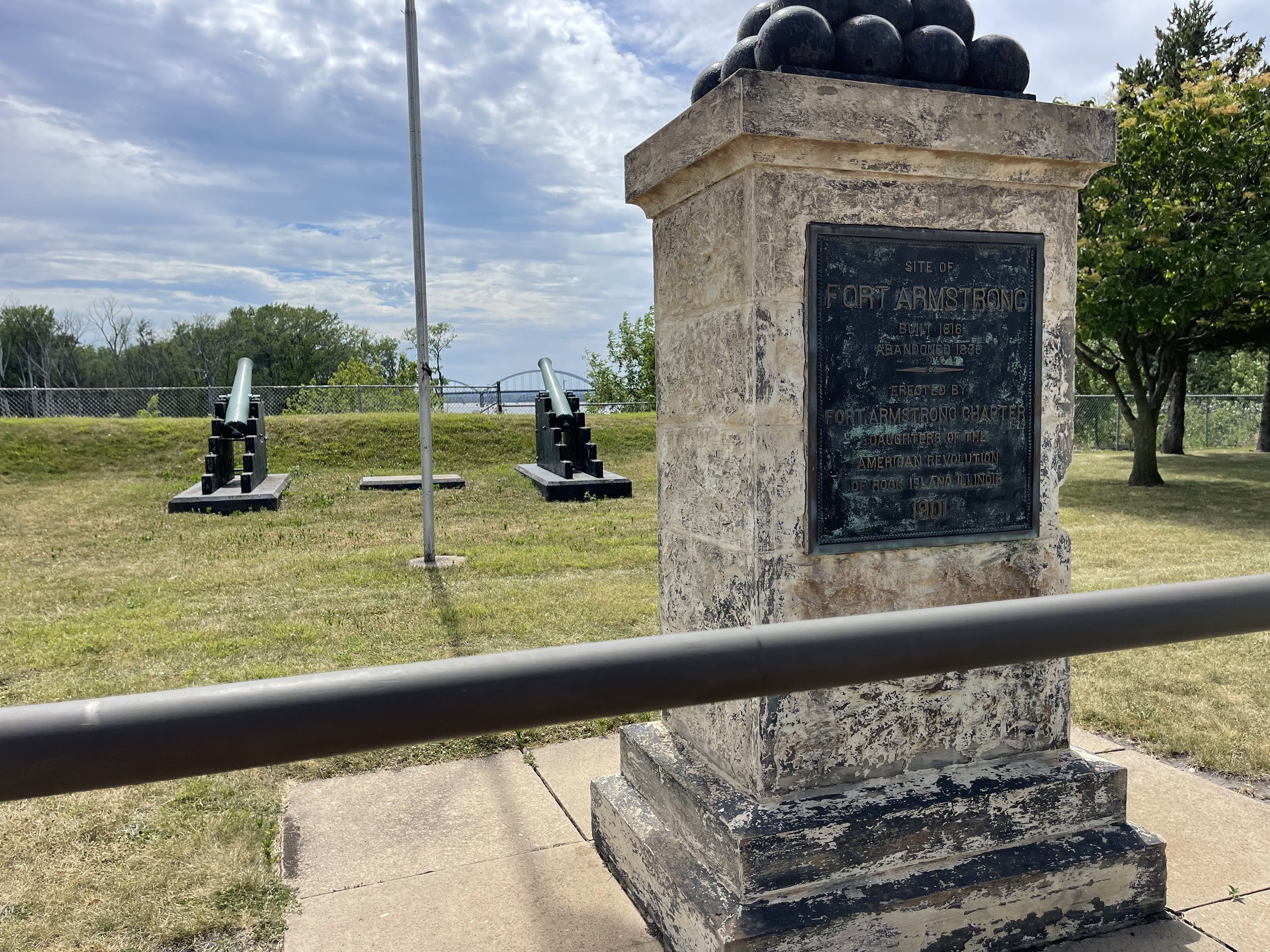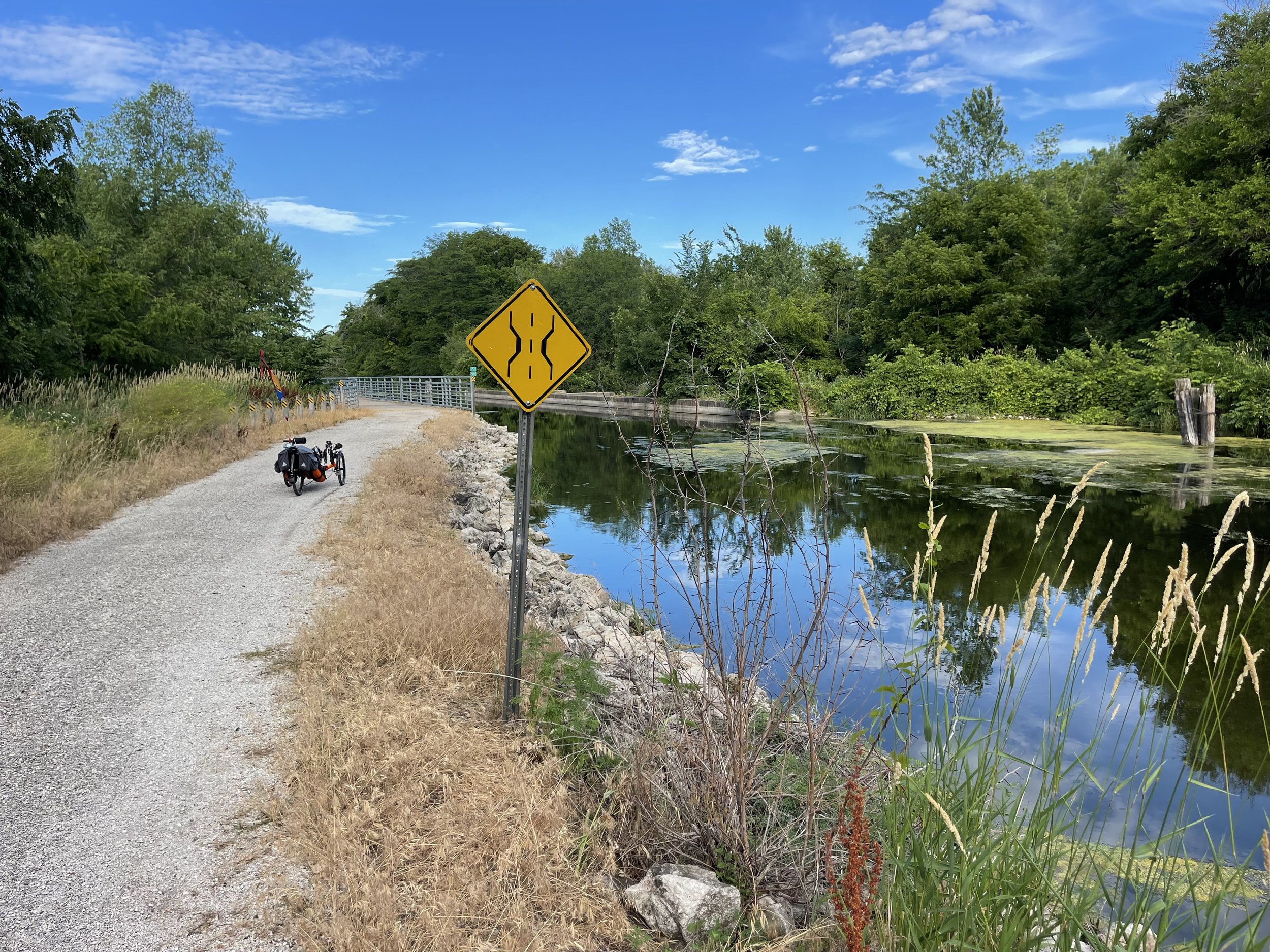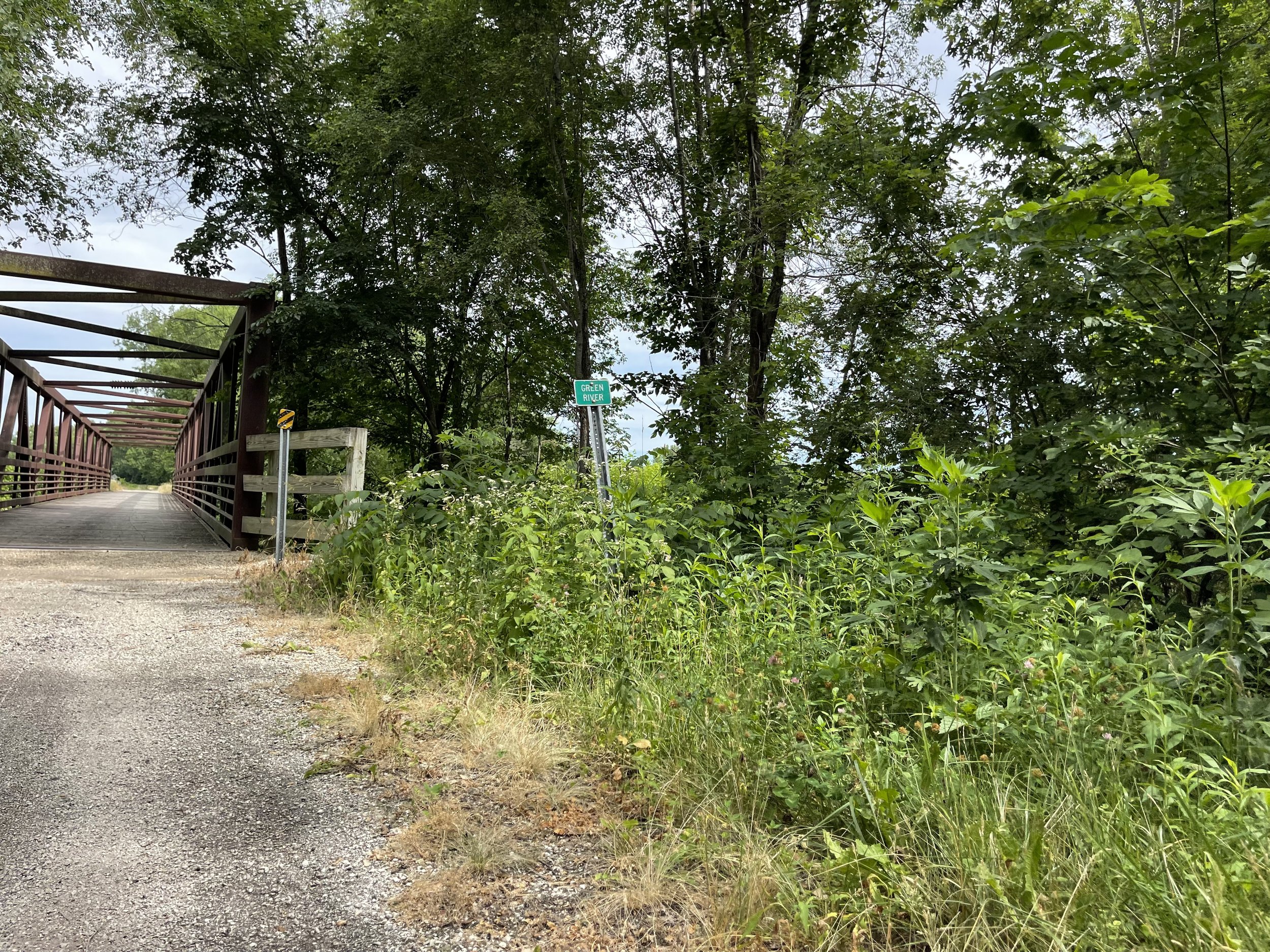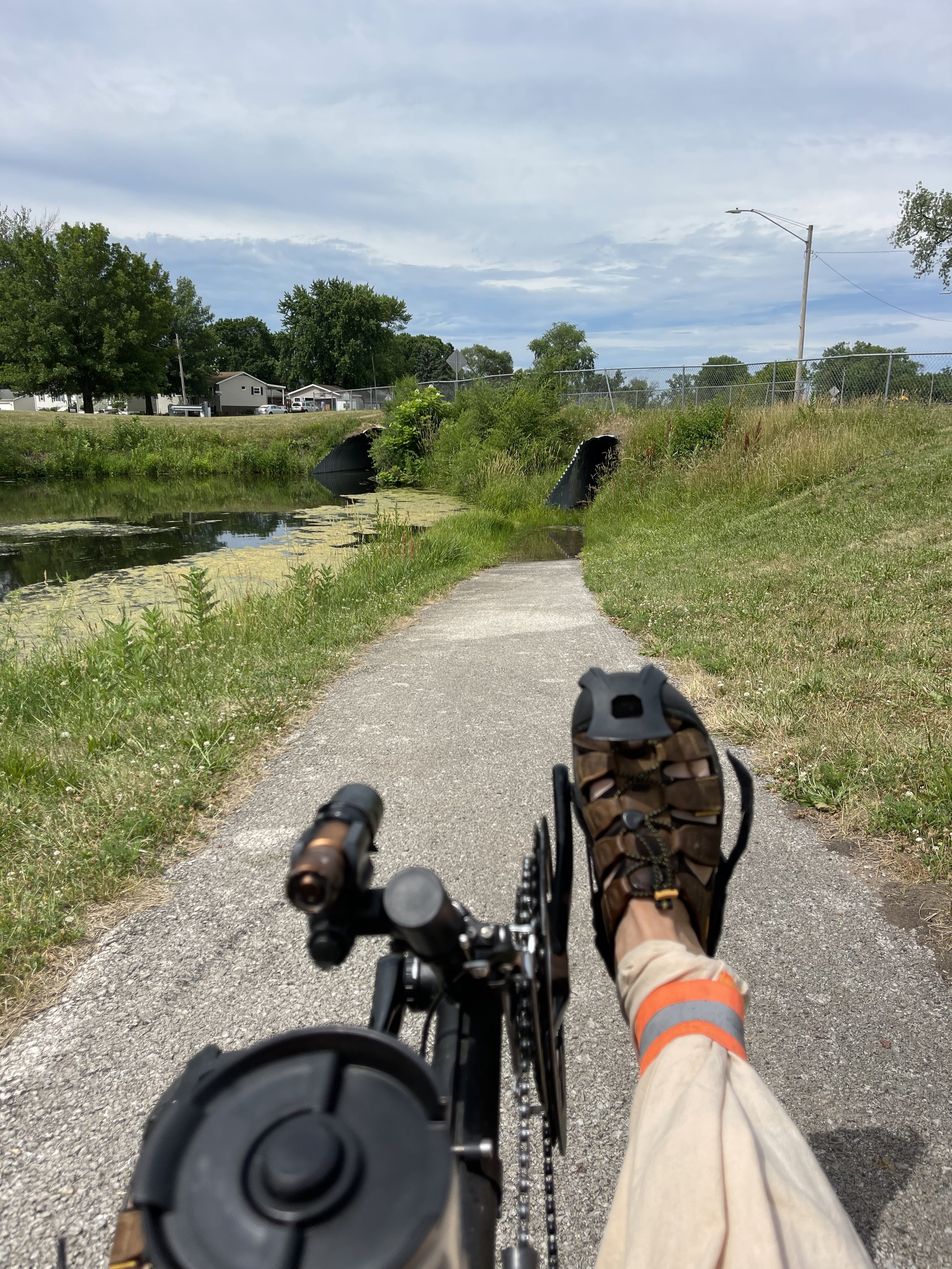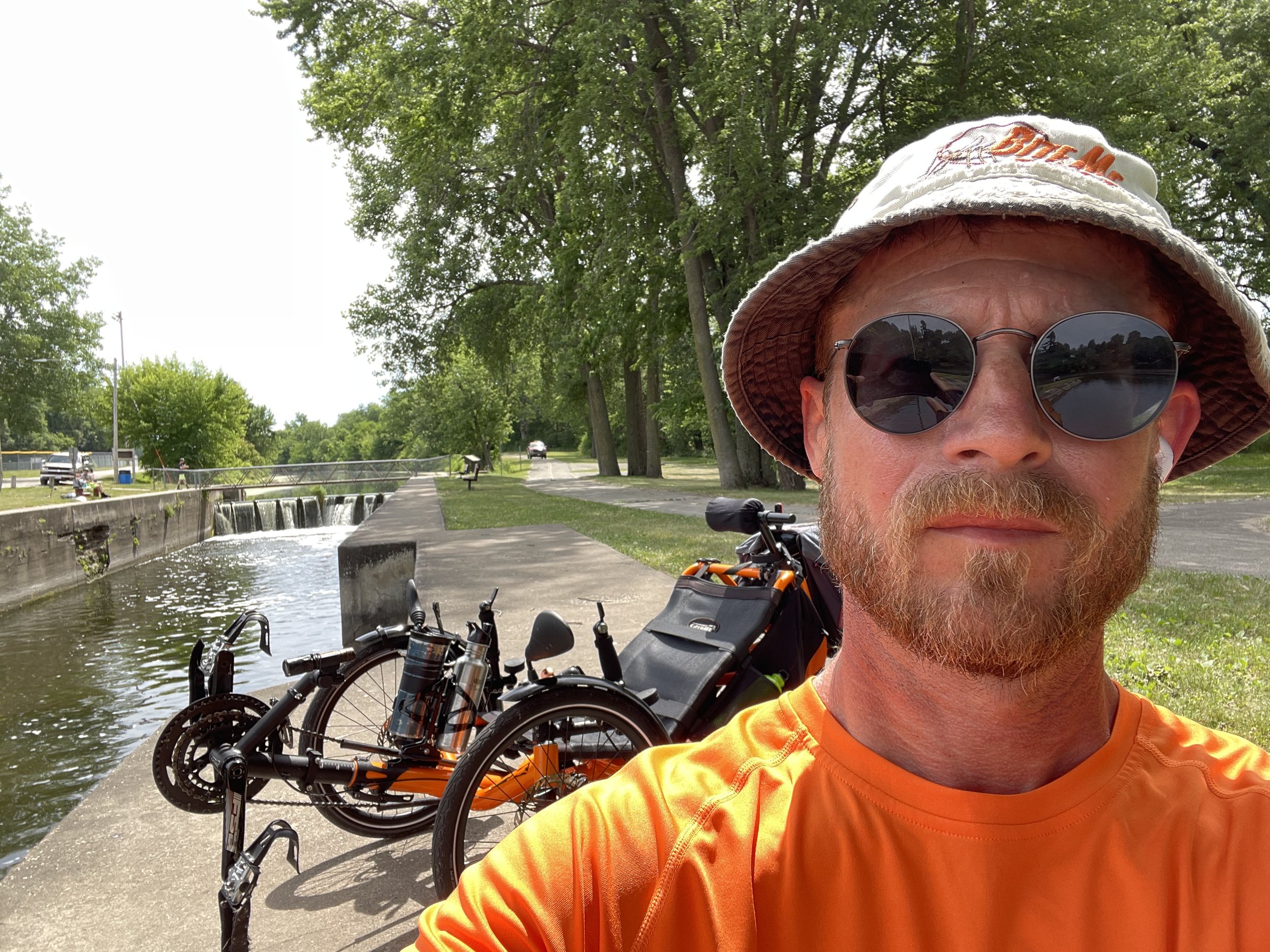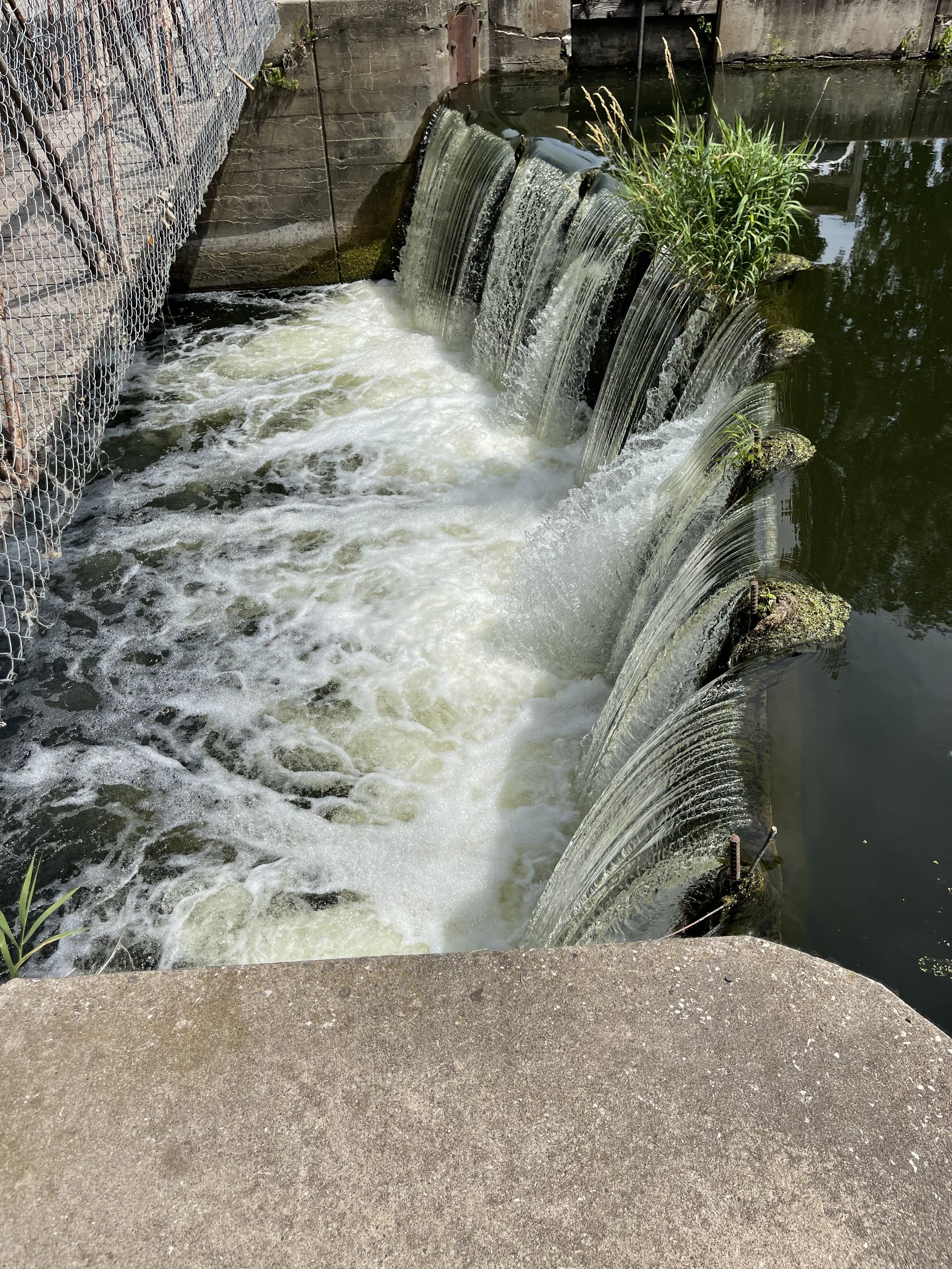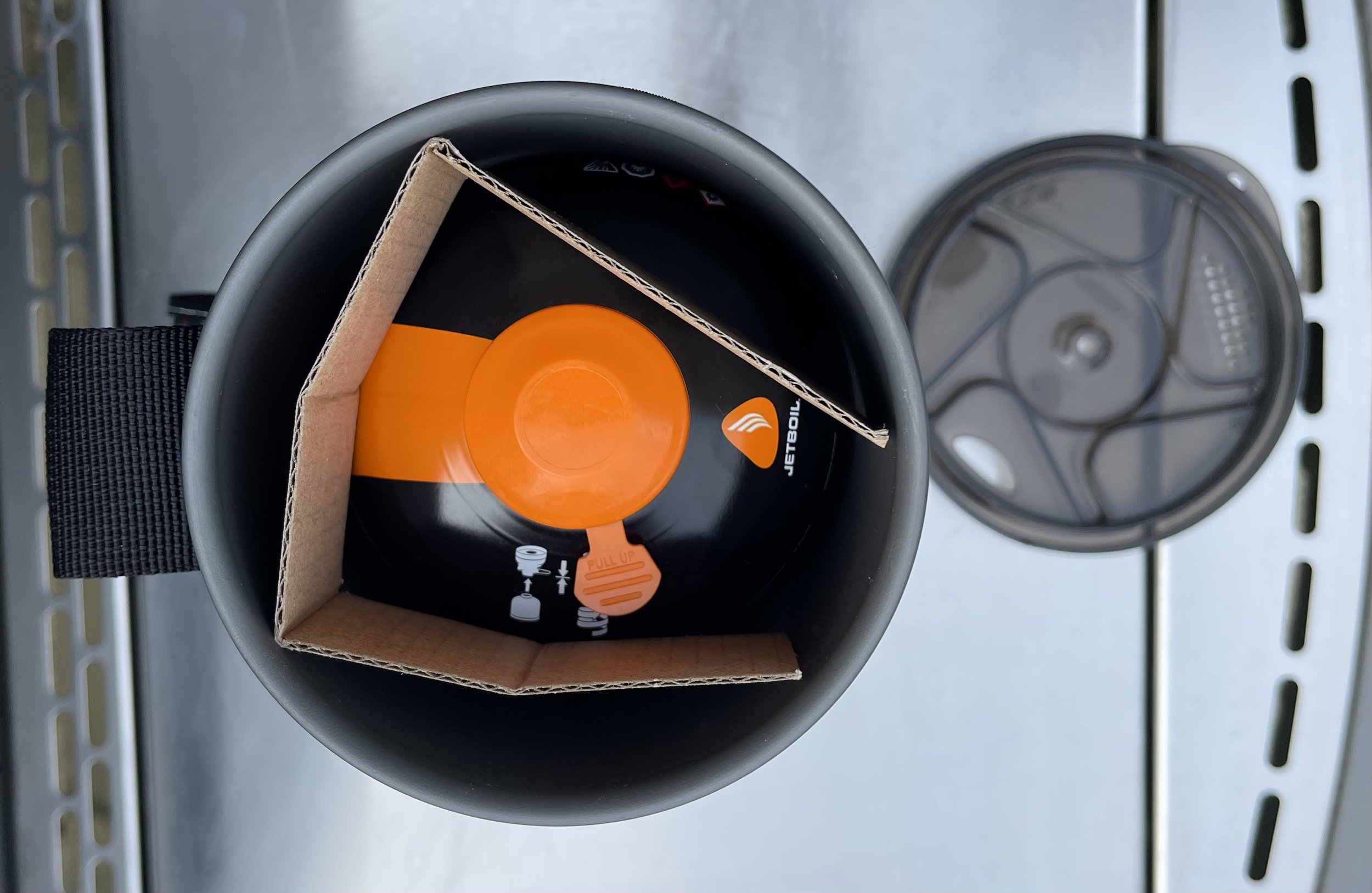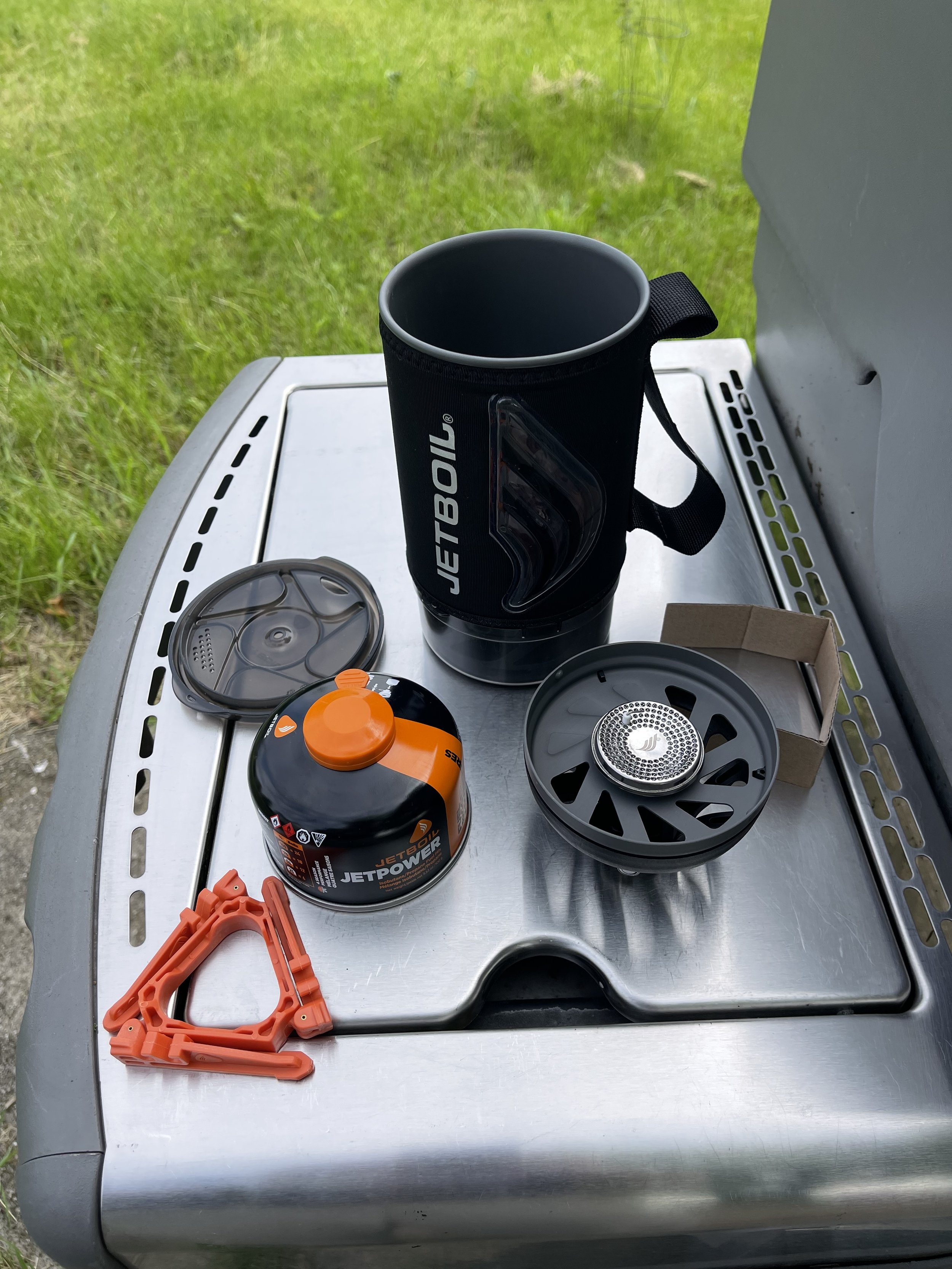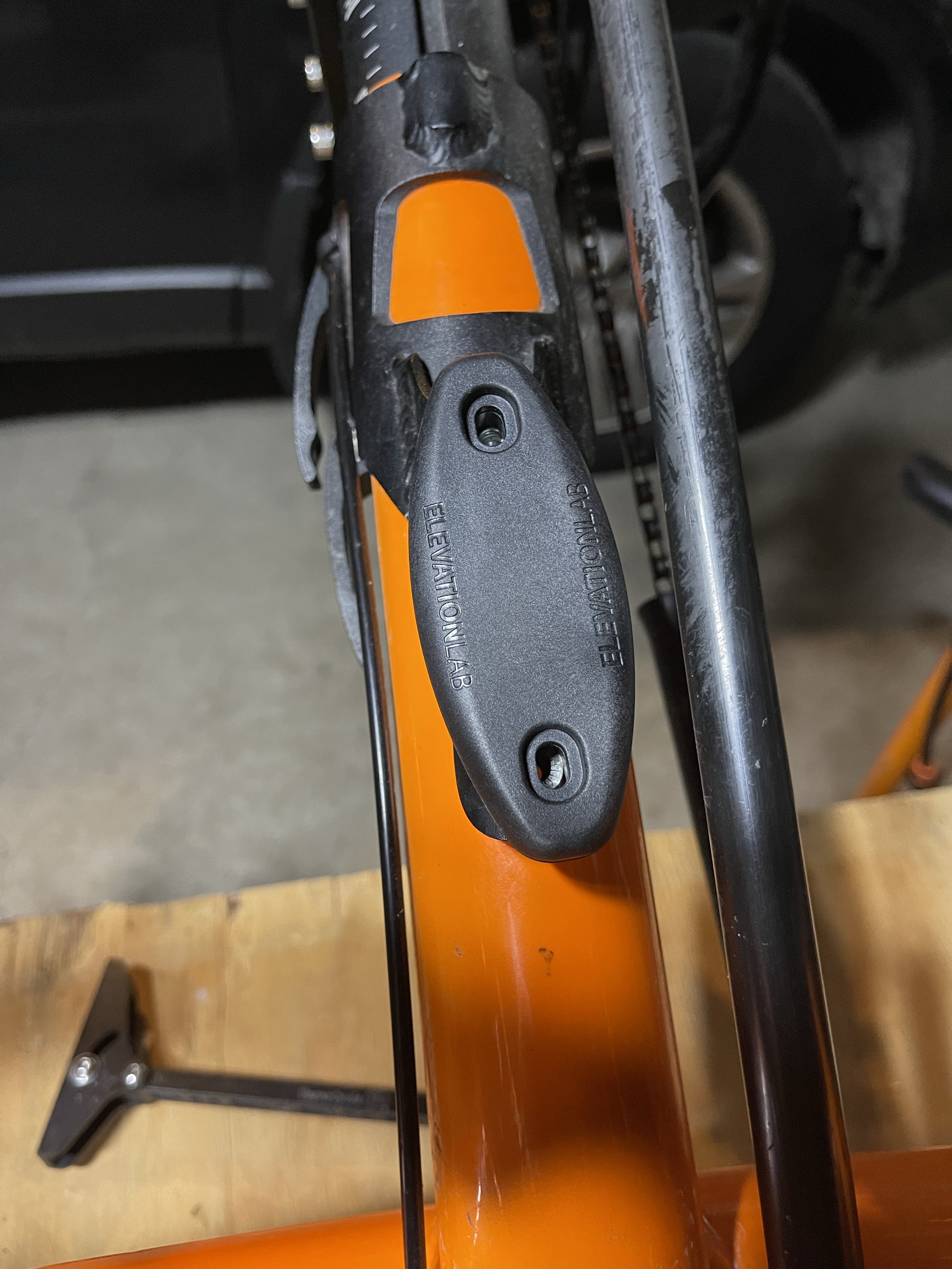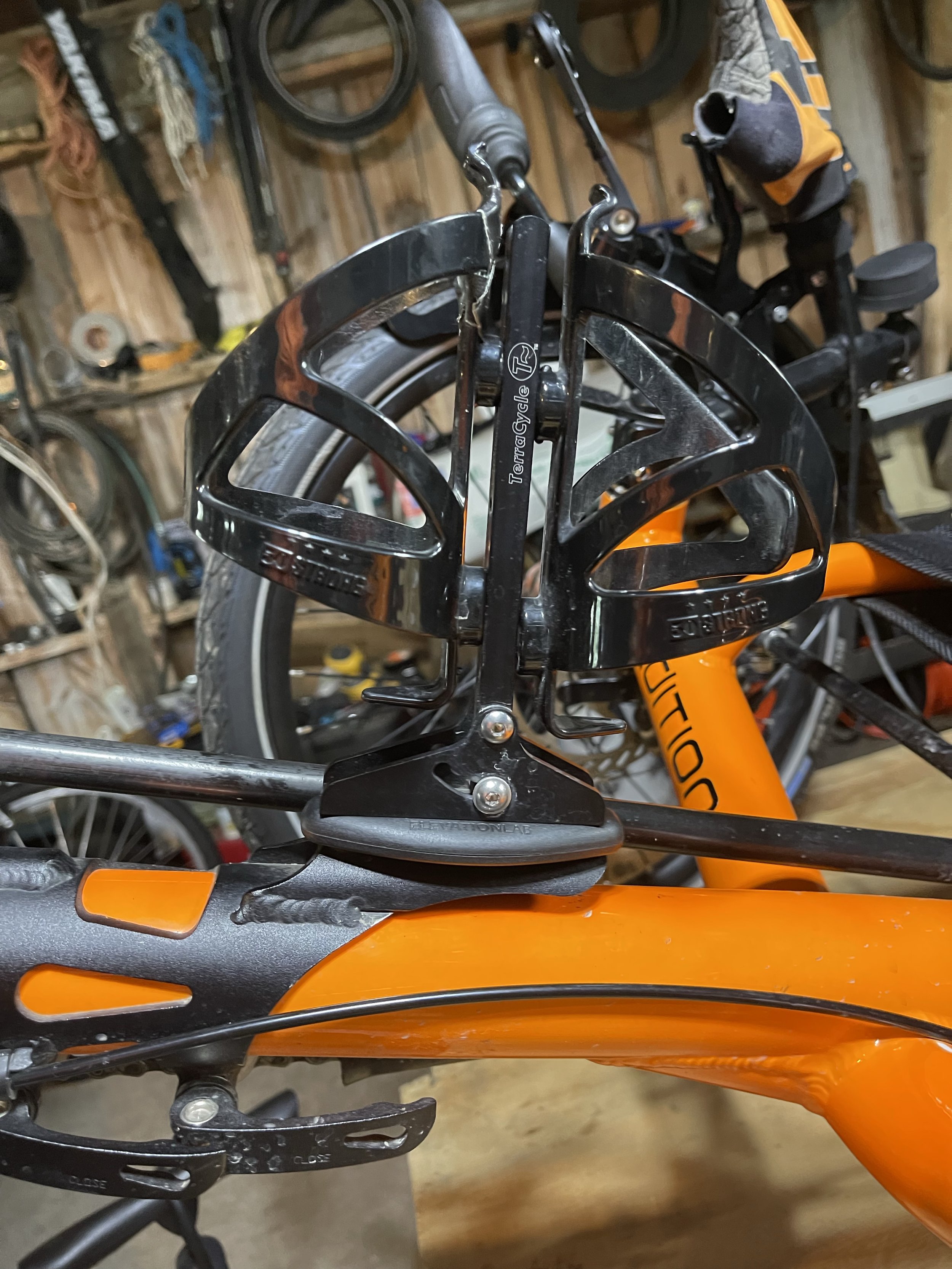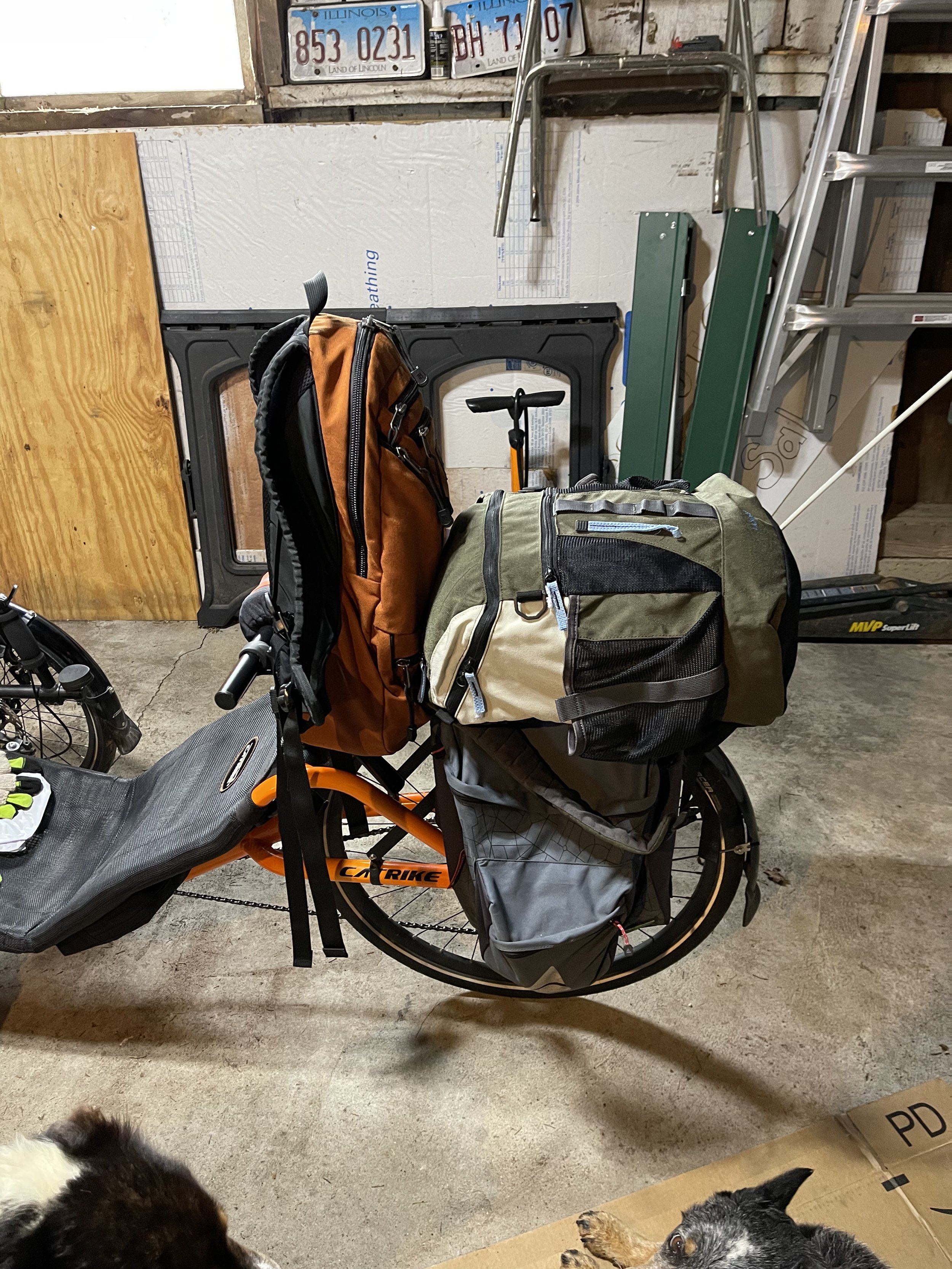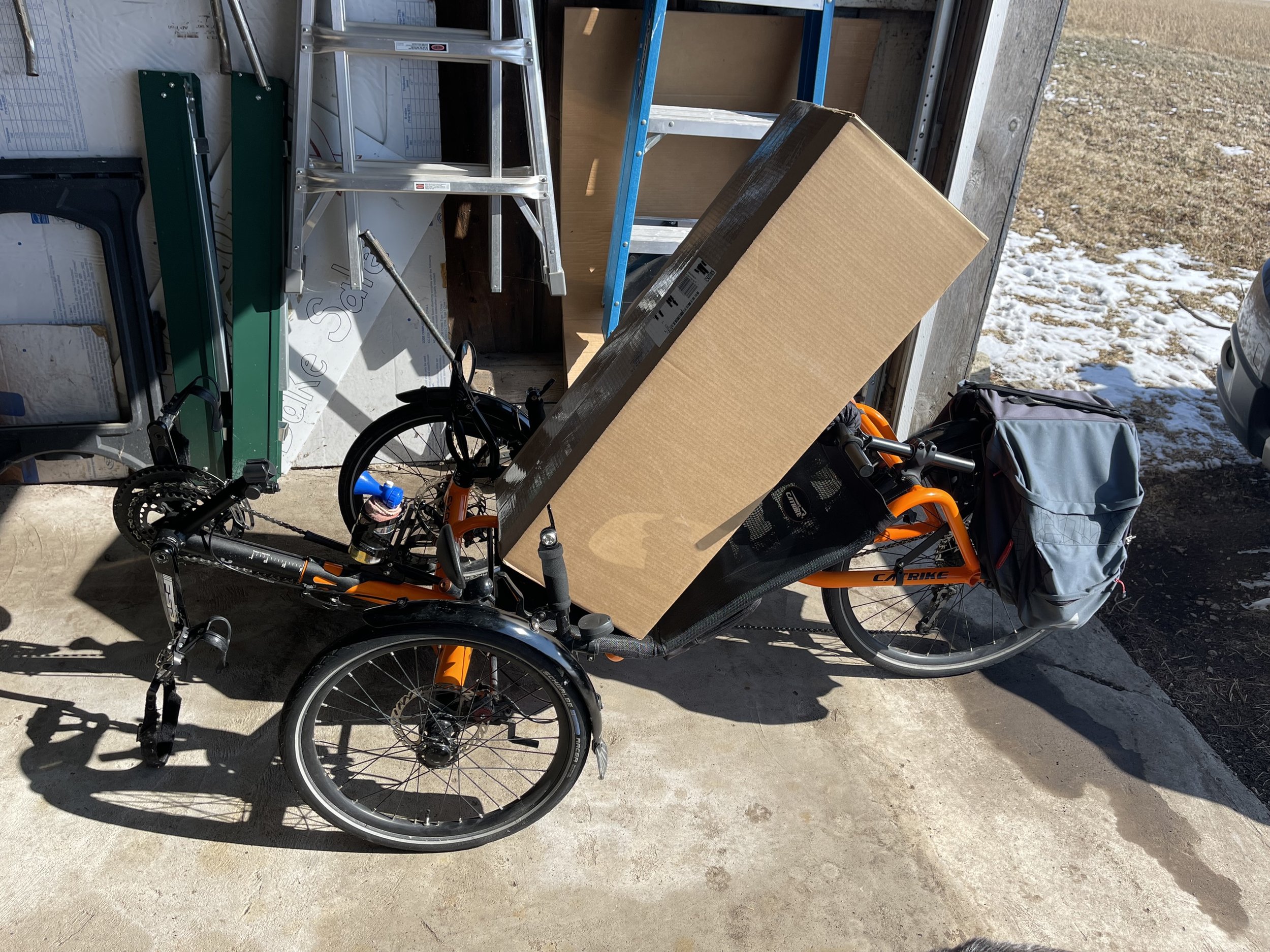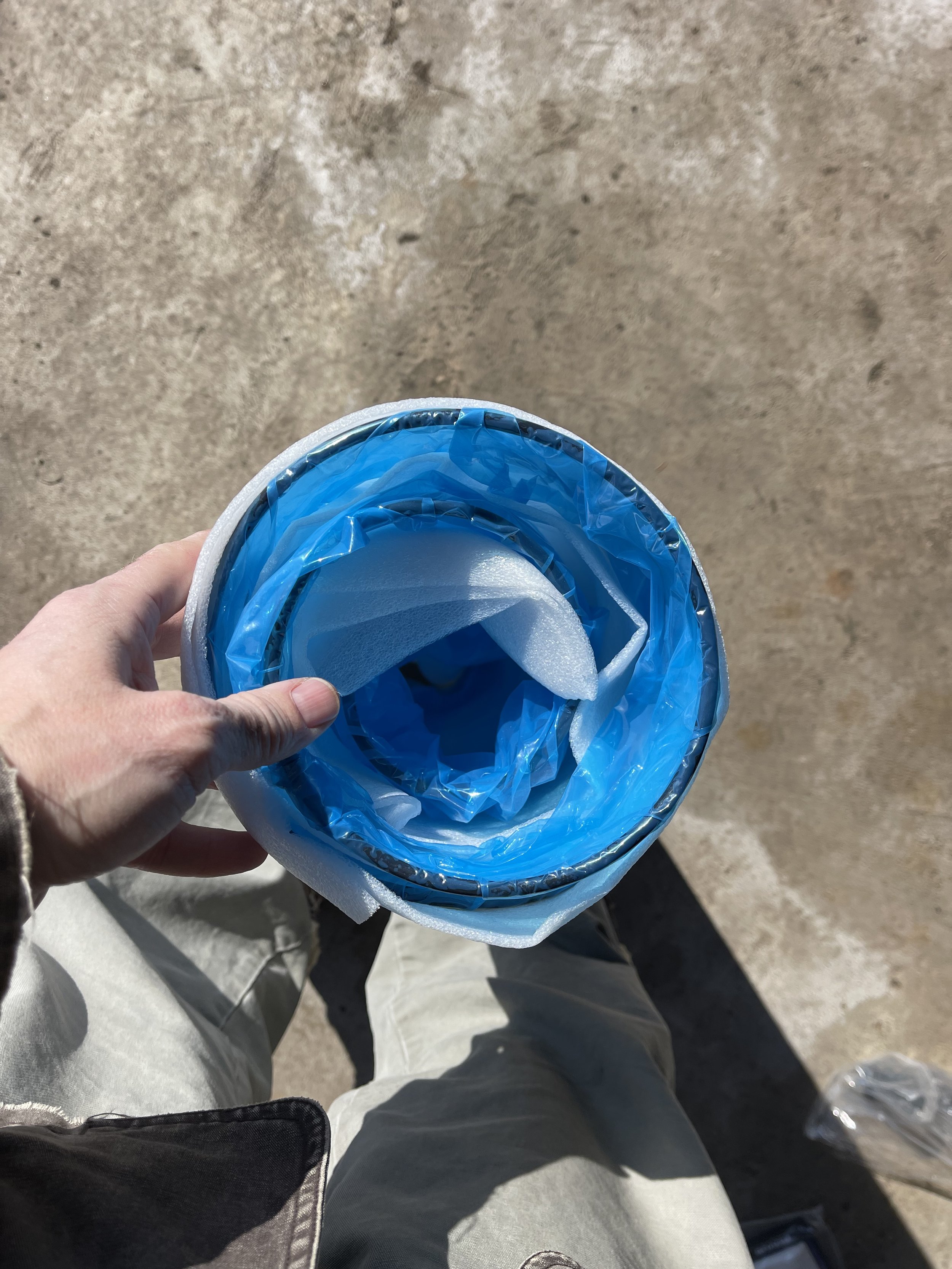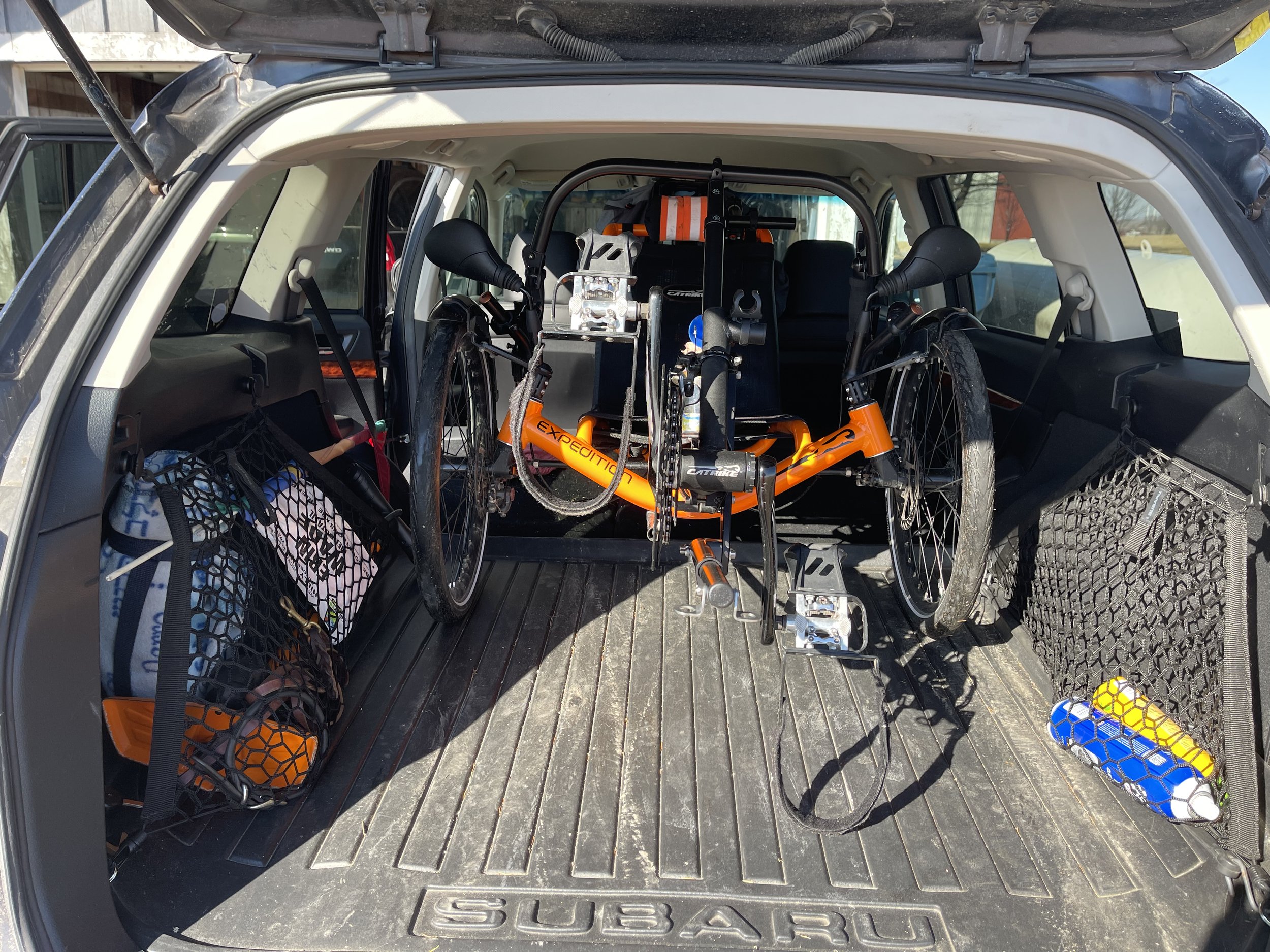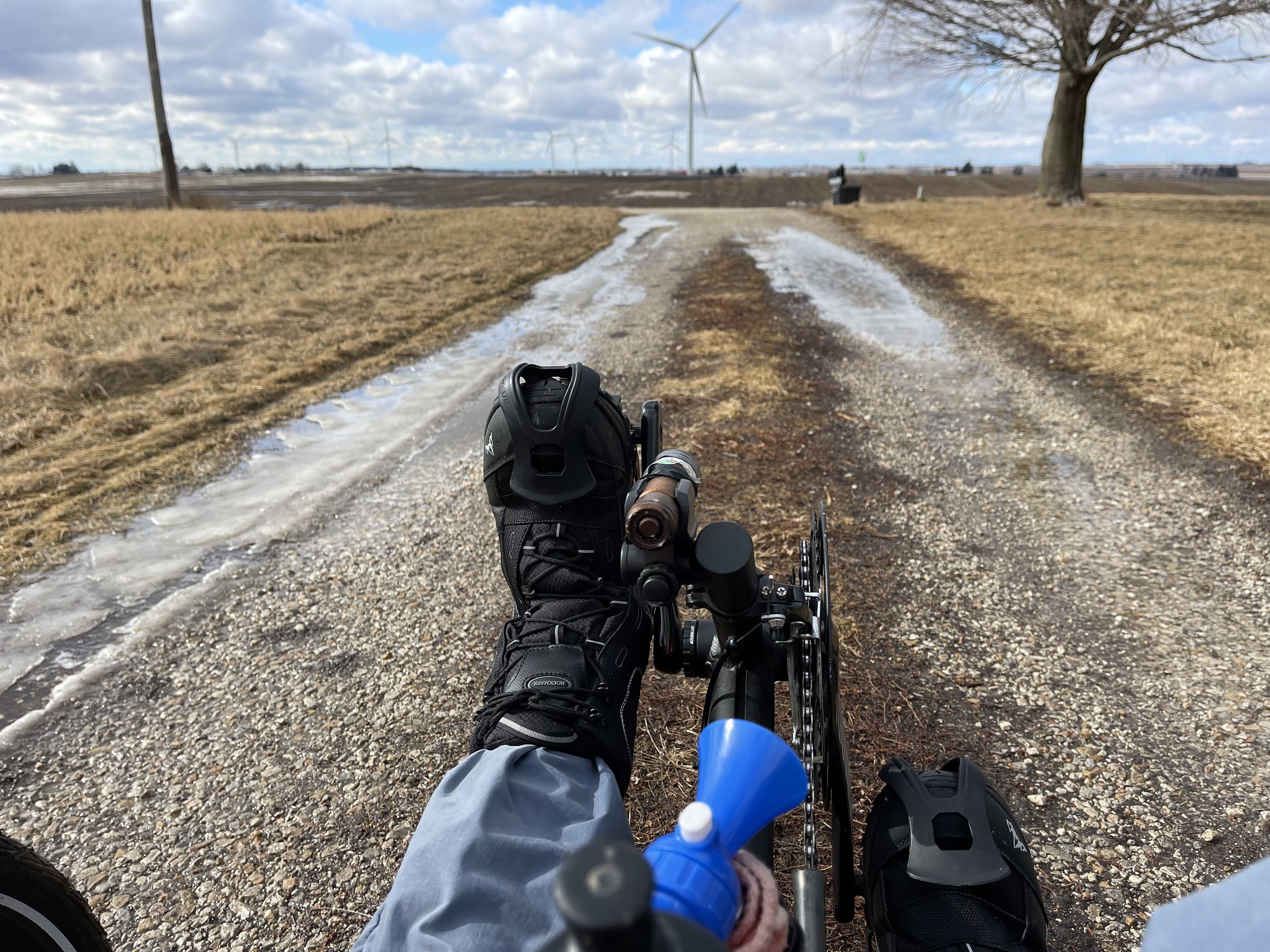When I decided I wanted to go electric for my work vehicle, one of the top items on my list was having a vehicle that my Catrike Expedition would fit inside of. Often, when I travel for work, the end of the work day provides opportunity to ride in places that I wouldn't otherwise, so I needed my work car to facilitate that.
To sort this out I spent some time online trying to find the cargo dimensions for the (5 seat) Model Y. The challenge is that most sites that report this information give you some variation of cubic dimensions - cubic inches, feet, liters, etc. Some of them cleverly use things like suitcases or beer boxes. Oddly, none of them list how many Catrike Expeditions you can carry…
The thing is that knowing the cargo area is 68 cubic feet doesn’t tell me anything about the shape of the cargo area or the size of the opening. If you can’t get the trike into the cargo area, it doesn’t matter whether it’s big enough otherwise.
Fortunately I found the Tesmanian site, which handily provides pretty much all the dimensions - in inches and centimeters - that you could ask for, including the height of the hatch opening. In sum, with the rear seats down, the dimension are:
- Length: 78.7” (200cm)
- Width at narrowest point: 37” (94cm)
- Opening Height: 27.6” (70cm)
My Catrike Expedition’s measurements, when set up for me are:
- Length: 80” (203.2cm)
- Width: 31” (78.74cm)
- Height: 26.5” (67.31cm) at the top of the rear rack
So, by measurements alone, I knew it should fit, with the expectation that the rear wheel would come between the front seats, and that I would fold the neckrest down (I have to do that in my Outback as well). And I’d seen someone post a picture of their trike in the back of a Model Y on a Facebook group some time ago, though I don’t recall where it was and I wasn’t able to turn it up again with a search.
For some reason I did not take the trike along with me when I went for my test drive of the Model Y. I did do that when I got my Mobile Trike Garage (2011 Subaru Outback), and it was great because then I knew without a doubt that it would fit.
Fortunately, it does:
Although the Model Y and the Subaru Outback are of similar exterior dimensions, the Model Y is narrower in the cargo area. The Model Y also has a sloping back end, while the Outback, true to its station wagon nature, has a roofline that runs parallel to the ground nearly all the way back to the hatch. So I was a little concerned as to how well the trike would manage with the hatch closed:
It fits just fine. Tesla uses large expanse of glass along the roof and hatch (which is why you see sky at the top of the picture). It’s visually dramatic, of course, but it also adds for considerably more vertical interior space than you would get in the same car with a traditional headliner.
And as I’m showing it here, the rear wheel does come up in-between the seats just a bit:
It isn’t far enough into the cabin to be very physically intrusive. The main downside is that the rear cargo bags completely block the view out the rear view mirror. However, the view out the back is really just a slit anyway - that sloped hatch glass is so steep that it only provides a tiny opening. But the car has back up cameras on the rear hatch and the sides, so this is largely a non-issue.
In my Outback I deal with the rear view issue by putting the Expedition in at an angle, horizontally speaking - essentially, putting the rear wheel in between the back of the front seat and the door. I hadn’t given that a try yet, so I went ahead and gave it a shot.
And it works. I could not get it to fit in and safely close the hatch with it angled to the driver’s seat in my driving position, but I could do it with the passenger seat moved up a bit:
And that gives back the tiny view out the rear:
I’d prefer it behind the driver’s seat because then it doesn’t obscure the view out the passenger rear windows - e.g. where you look when you finish passing someone on the left. But again, the Model Y has side-view/blind spot cameras to help with that. And the front seat is not too far forward - at 5’8” I can sit in it comfortably, and the only likely passengers with me and the trike in the car at the same time are My Lovely Wife or my offspring, and both are shorter than I am (we are not tall people). And with the trike at an angle there’s a little more usable cargo space in the back as well.
So - long story short: It fits! Any trike the same size as the Catrike Expedition or smaller should be able to fit as well - for example, I’m certain MLW’s Catrike Pocket will fit also.
A couple of things to note here - the cargo measurements are without the aftermarket cargo area protective cover shown in the car here. The cover does eat up a bit of vertical space, but the trike still fits. And I will note that I’m reporting the length from the Tesmanian website above, but I don’t know how they decide where the end of the cargo area is at the front end - my trusty Stanley tape measure makes it seem a little longer, and obviously the front seat positions will make a difference as well.
